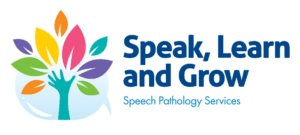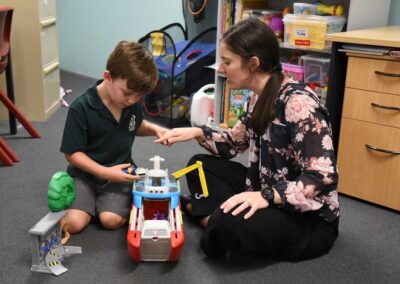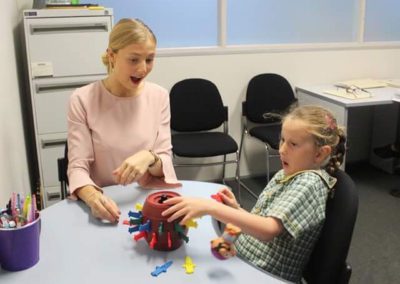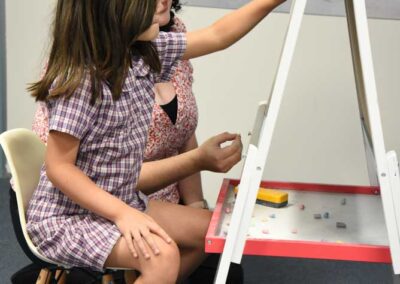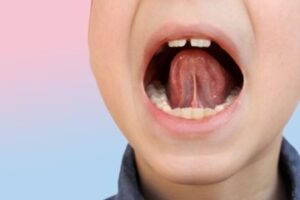
Orofacial myology is a specialised field within the realm of speech pathology and dentistry that focuses on the study and treatment of oral and facial muscles’ functions and dysfunctions. It is the missing link between the work orthodontists do to improve the structure of the oral cavity and the work that speech pathologists do to improve oral function in feeding and speech. This intriguing discipline is growing in popularity as more professionals understand the crucial role it places in enhancing overall oral health, speech and facial aesthetics. In this blog, we will explore what it entails, it’s significance in the field of speech pathology and some of the techniques and applications.
Understanding Orofacial Myology
Orofacial myology focuses on the muscles of the face and mouth, aiming to identify and rectify abnormal patterns of muscle activity. These patterns can lead to various issues, including speech sound disorders (think tongue thrust and lisp), dental problems (malocclusions) and facial aesthetic concerns. The primary goal of orofacial myology is to establish proper muscle function and coordination for improved oral and facial health.
Common Orofacial Myofunctional Disorders:
- Tongue Thrust: This disorder involves the tongue pushing forward against or between the front teeth during swallowing. A child with a tongue thrust often has a low, forward tongue resting position. This can lead to dental misalignment and speech errors, predominantly a persistent interdental lisp and interdental production of alveolar sounds (i.e. /t/, /d/, /l/, /n/).
- Thumb Sucking: Prolonged thumb or finger sucking can affect the development of the oral cavity, leading to issues like high-arched palate, open bite and a tongue thrust.
- Open Mouth breathing: Nasal obstruction results in breathing through the mouth instead of the nose, which in turn, impacts tongue resting positioning, development of the palate and dental growth.
- Sleep disordered breathing: When nasal breathing is impacted, a child can experience sleep disordered breathing which can range from frequent snoring to obstructive sleep apnoea. Sleep issues can result in difficulties with emotional regulation, slow growth and learning difficulties.
Orofacial Myology Techniques
- Oral Exercises: Orofacial myologists use a variety of exercises to strengthen the muscles involved in speech and oral functions.
- Retraining: Therapy involves a series of exercise and techniques designed to correct dysfunctional muscle patterns such as tongue thrust swallowing pattern and incorrect tongue resting position.
- Tools: Various tools, such as myodots, bite blocks, myomunchie may be used to provide feedback to the muscles and to help strengthen them.
Applications of Orofacial Myology
- Speech Improvement: Often speech pathologists attempt to work on speech sound disorders (such as lisps) that actually have a myofunctional disorder and consequently struggle to make lasting improvements. When orofacial myology is used to address the underlying muscle dysfunction (e.g. tongue resting position), the child’s articulation will improve, and these improvements will be evident consistently at a conversational level.
- Orthodontic Support: By addressing issues such as tongue thrust and thumb sucking, orofacial myology can contribute to preventing dental misalignments and malocclusions.
- Enhanced Facial Aesthetics: Improving muscle function and coordination can positively impact facial aesthetics, promoting balanced facial development.

Conclusion
Orofacial myology is a multidisciplinary approach that bridges the gap between speech pathology and dentistry, offering solutions to a variety of speech, swallowing, dental and oral challenges. By understanding and correcting abnormal muscle patterns, orofacial myology plays a vital role in improving speech, preventing dental issues, supporting orthodontic treatment and enhancing overall facial aesthetics. As this field continues to evolve, it holds the promise of contributing significantly to holistic oral health and well-being.
